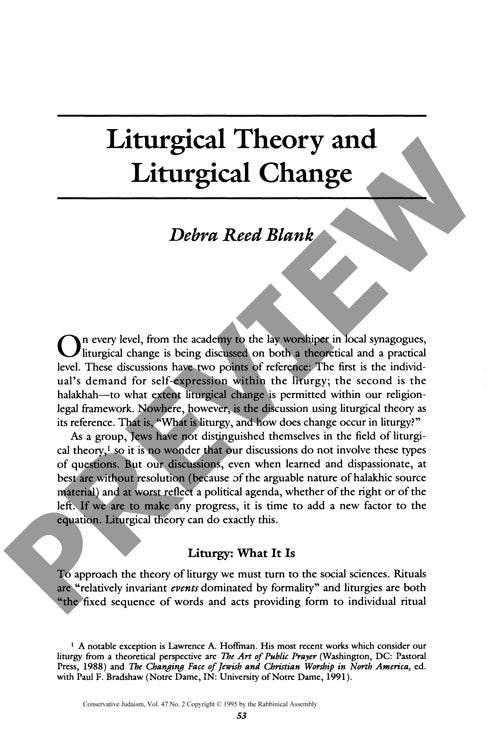Liturgical Theory and Liturgical Change
Couldn't load pickup availability
Contemporary Jewish liturgical debates have become mired in narrow discussions of personal expression and legal permissibility while missing a crucial question: what makes liturgy fundamentally different from ordinary prayer? Traditional Jewish liturgy exhibits eight distinct characteristics: public formality, rhythmic repetitiveness, cultural transmission, canonical authority, resistance to change, deliberate archaism, embodiment of sacred values, and performative efficacy. These features reveal liturgy as formalized public worship, sharply distinct from spontaneous individual prayer. American religious individualism increasingly challenges these liturgical foundations, particularly through feminist critiques of traditional God-language and politicized ritual adaptations. Using the conceptual framework of kodesh (sacred) versus chol (ordinary), liturgical language maintains its sanctity precisely through its separation from everyday speech patterns. By combining sociological analysis of American religious trends with anthropological theories of ritual behavior, this research demonstrates that while liturgical change can occur legitimately, it must emerge organically from practitioners rather than external ideological pressures. Such change must maintain structural continuity with tradition while preserving worship's communal character. Effective liturgical development therefore requires a delicate balance: conserving authoritative tradition while fostering contemplative public worship that transcends contemporary ideological concerns.

More Information
-
Physical Description
-
Publication Information
Published 1995
ISBN
-
Publication Credits
Debra Blank

